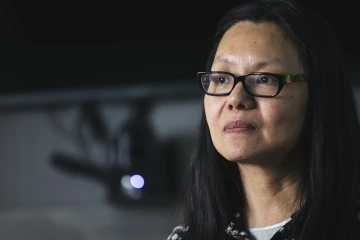
Q&A with Janet Meiling Roveda, professor in the College of Engineering and director of the Center to Stream Healthcare in Place, sponsored by the
National Science Foundation.
Davis de Dios Media
What are some of the challenges in bringing health care wearables to market?
The materials used are in direct contact with skin and some devices emit radiation in various wavelengths – so even something like a wristband device needs to
undergo studies and clinical trials for FDA approval. That can mean significant development and refinement time between early science, prototypes and a medical-grade product.
Also, for startups and mid-size companies, releasing a product without a large user base is risky. We need insurance companies to get involved and cover these
products. Government involvement, both federal and state, could also lower the risk for innovation and provide greater incentive to reach the market sooner.
Will wearables dramatically expand the volume of health data available to researchers, broadly speaking?
When it comes to data, one thing people often overlook is ownership. For example, in the U.S., hospitals usually claim ownership of patient data, requiring researchers to navigate various silos to access it.
One of the countries that has managed to break down those silos very successfully is Israel. There, it’s much easier for researchers to access data for studies, even data from multiple sources. They use blockchain technology to create smart contracts, so with one signature, patients grant access to their de-identified data for research.
And because the data is stored across decentralized, interconnected servers, they’re not dependent on a single provider, thus decreasing vulnerability to security breaches. Unfortunately, we’re not anywhere close to this level of data accessibility in the United States.
